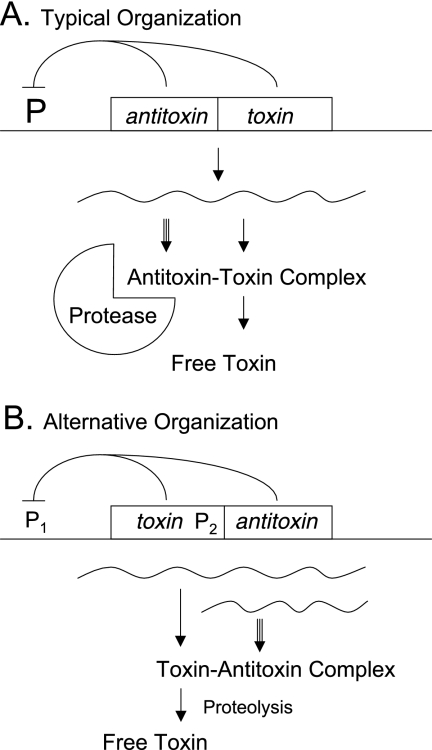FIG. 2.
Organization of toxin-antitoxin systems. (A) Typically, the antitoxin gene precedes the toxin gene. (B) In some families, the usual order is reversed and a second promoter is observed. In both cases, antitoxin and toxin genes are usually small and often have overlapping stop and start codons, indicating that translation may be coupled. Transcription of the two genes is generally autoregulated by the protein products. The antitoxin is synthesized at a greater rate than the toxin but is also degraded at greater rate, due to the action of a specific host-encoded ATP-dependent protease, such as Lon, ClpXP, or ClpAP. At steady state, there is sufficient antitoxin to bind and neutralize the toxin. If the genes are lost or if their synthesis is sufficiently disrupted, the continuing proteolysis of the unstable antitoxin may liberate the stable toxin and produce biological effects. In at least a few atypical instances, a third protein product is implicated in the functioning of the system or the toxin is unusually large. Numerous reviews are available (19, 23, 29, 31, 35, 56, 57, 68, 70).

